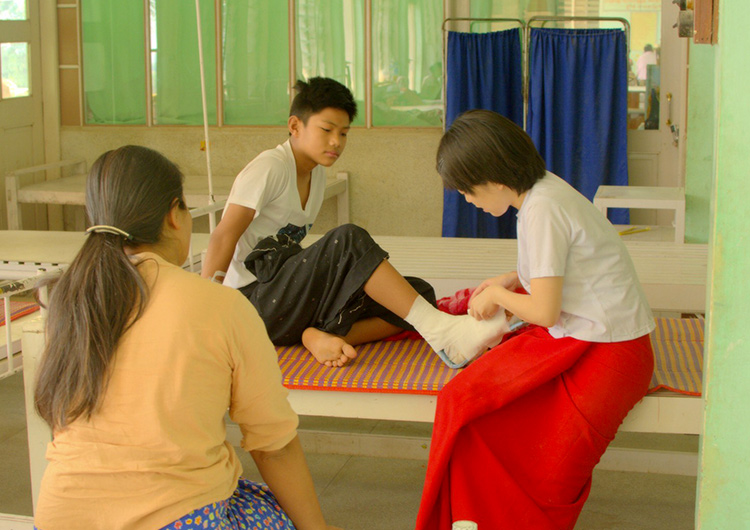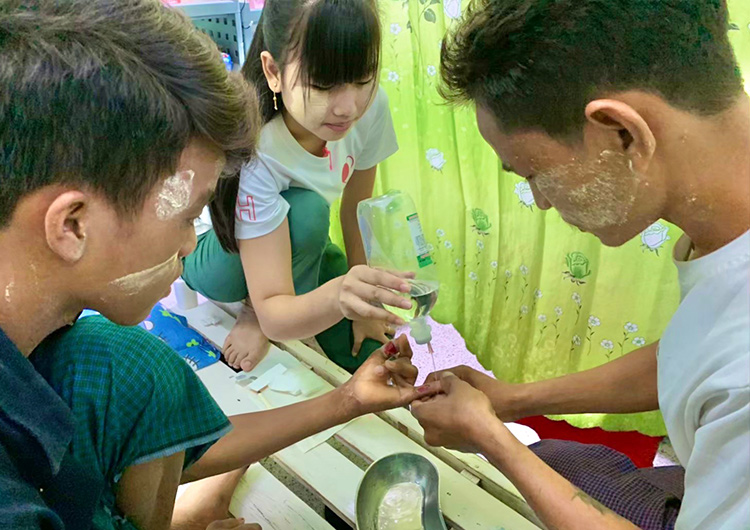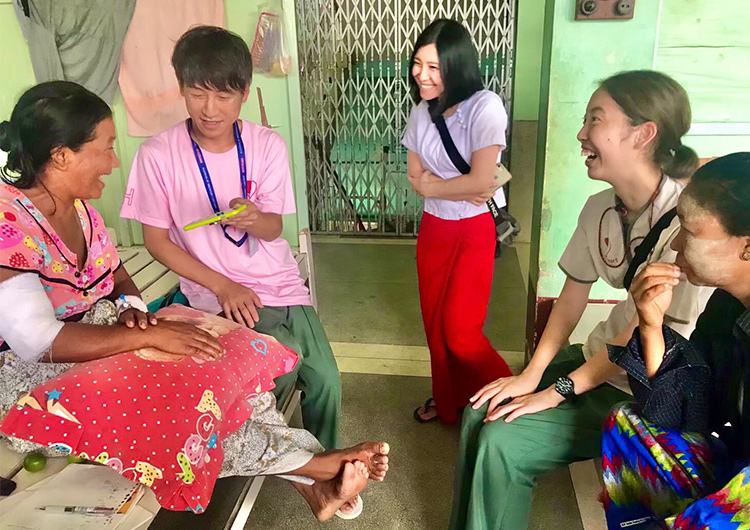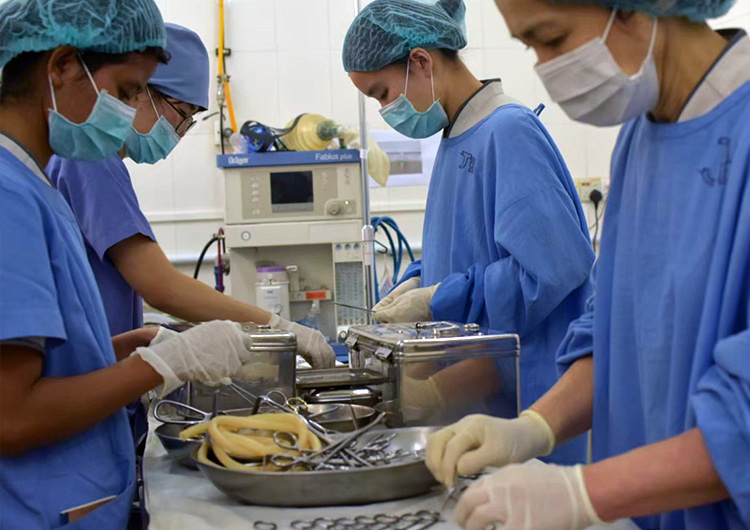This article was originally written by Ms. Ohashi Michiyo, one of Japan Heart’s Senior Nurses
Mingalaba!
This is the final part of my surgical activity reports. This time I would like to tell you about what happens after a surgery!
During surgical missions, we perform surgeries until midnight every day. Everyone is so tired by the last day of the surgical activity period, but we all do our best!
Often surgery is performed right up until the day of Dr. Yoshioka’s return to Japan. I often wonder if we can complete all the surgeries before Dr. Yoshioka goes back to Japan, and I always feel relieved when all of the surgeries are safely completed. After this, all of the staff see Dr. Yoshioka off at the airport.
After the surgical period, I feel relieved to see Dr Yoshioka. However, after he and the other doctors who come to Myanmar leave, it is the job of the nurses to take charge of the patients’ treatment. Nurses decide such things as the discharge date and the adjustment of antibiotics.
Since there are usually 100 surgical patients in total, we treat the patients with the cooperation of short-term volunteers. Each nurse has more than 20 patients under their care and we have to take care of medical records, discharge dates and wound treatment. We have to carefully think about where and when to remove dressings (sometimes, there are clinics near the patients’ homes that can do this). There are many things to consider such as whether the wound needs to be seen and when to take care of the dressing, but you have to make decisions based on the individual patient and their family circumstances.

There is another difference between the Japanese medical field and our activities at Wachet. Often a patient’s family is responsible for treating their wound and there are quite a few patients who have quite long stays in the hospital.
During long hospital stays, patients are of course unable to work as are the accompanying family. Therefore, there are many patients who want to return early. When we look at the wound condition, we consider what the family is capable of treating and practice the treatment together so they can treat the wound post-discharge.

For the patients, the children, mothers and fathers treat the wounds (surprisingly, there are many households where the fathers take care of this instead of the mother. Myanmarese men are dexterous!). There are times when I feel that the family of patients give me a sense of security, and they also help to alleviate the pain of the surgery.
Watching the family work hard to treat a patient’s wounds gives me a glimpse of the strong bonds and deep affections they share, and I feel warm.
Seeing such hard work, we want to do as much as we can and support the patients and their families.

As for the operating theatre team, when we aren’t treating the wounds of the postoperative patients, we assist with patient treatment and cleaning up the used surgical equipment.
After all the surgical equipment is taken out of the cast and dried, they are individually polished with oil to protect from rust.
Recently, we have been carrying out surgeries at affiliated external hospitals. Because of this we bring our own surgical instruments and other items from Wachet, so we have to prepare and clean them up. It can be tough!
The end of the surgical activity is actually the beginning of the next surgical activity. Immediately after the surgeries are over, we are preparing for the next surgeries. Everything is connected to the next and everything is for the smiles of the patients, their families and all of the staff who work hard. I will continue to do my best to provide safe medical care for as many patients as possible.

Thank you to everyone who read my story to the end!
The content I introduced is just a snapshot of the scene. In reality the smiles of the patients and their families, the stern examinations of the staff, the moment when the staff and volunteers become a team and so on. There are many things to see and feel.
I really hope that you come to the site and share the challenge, fun and happiness with us.
Senior Nurse, Michiyo Ohashi

